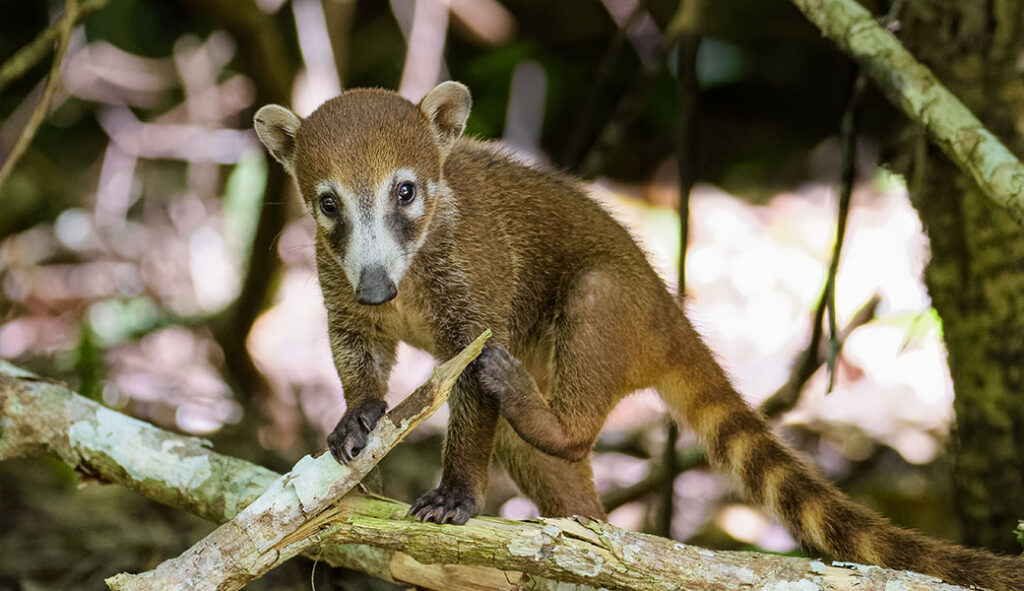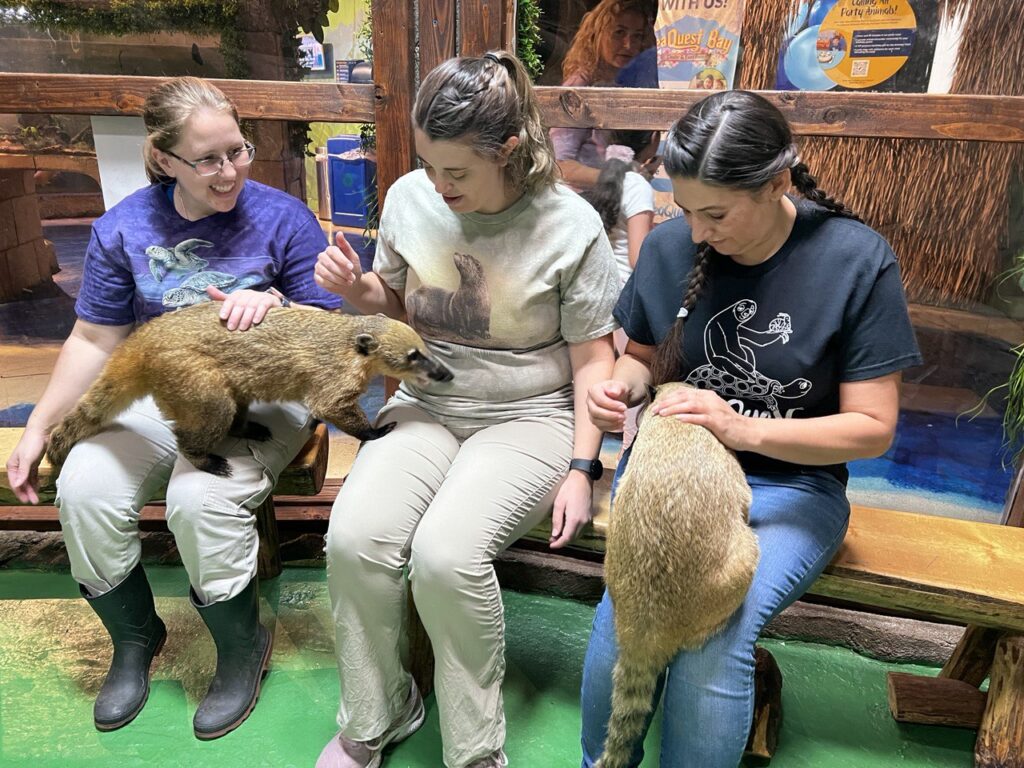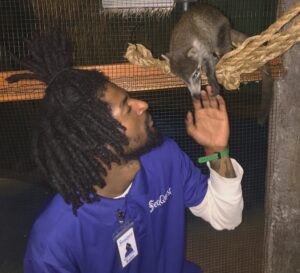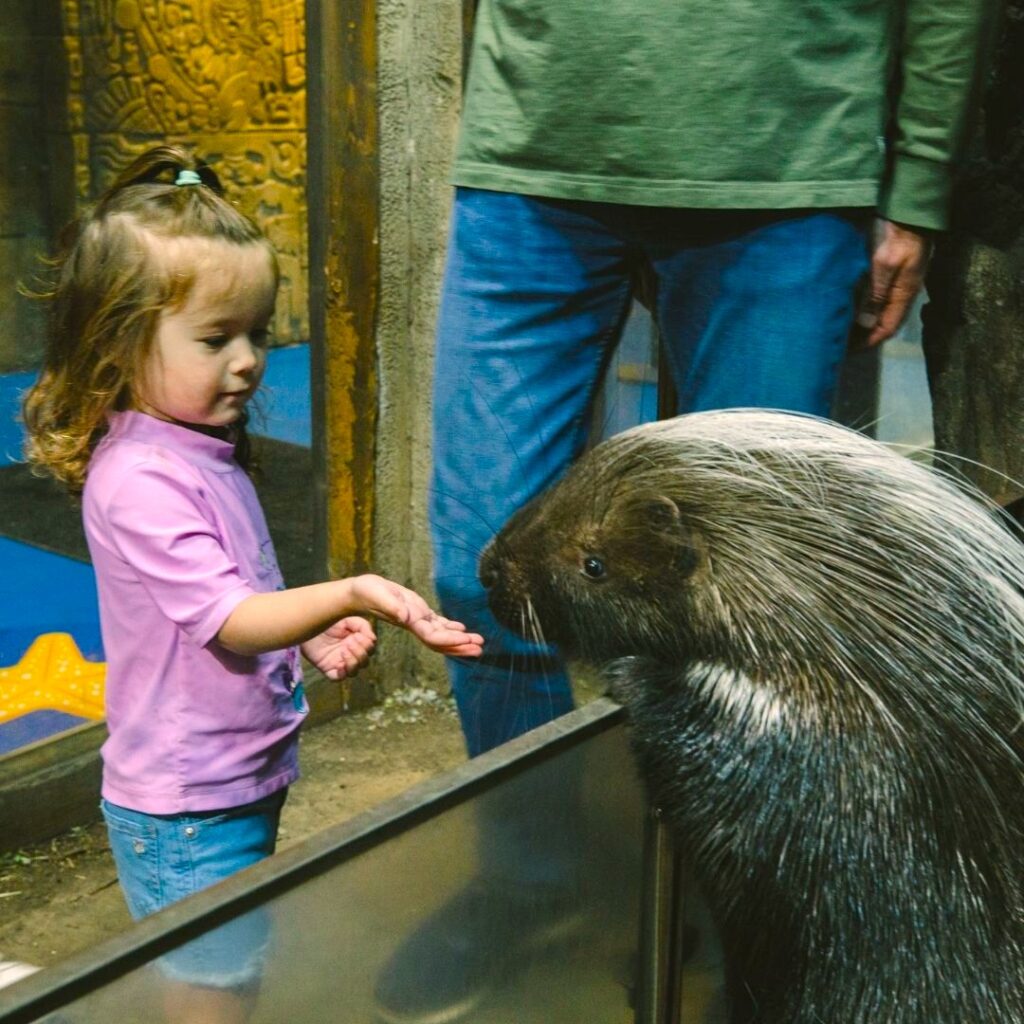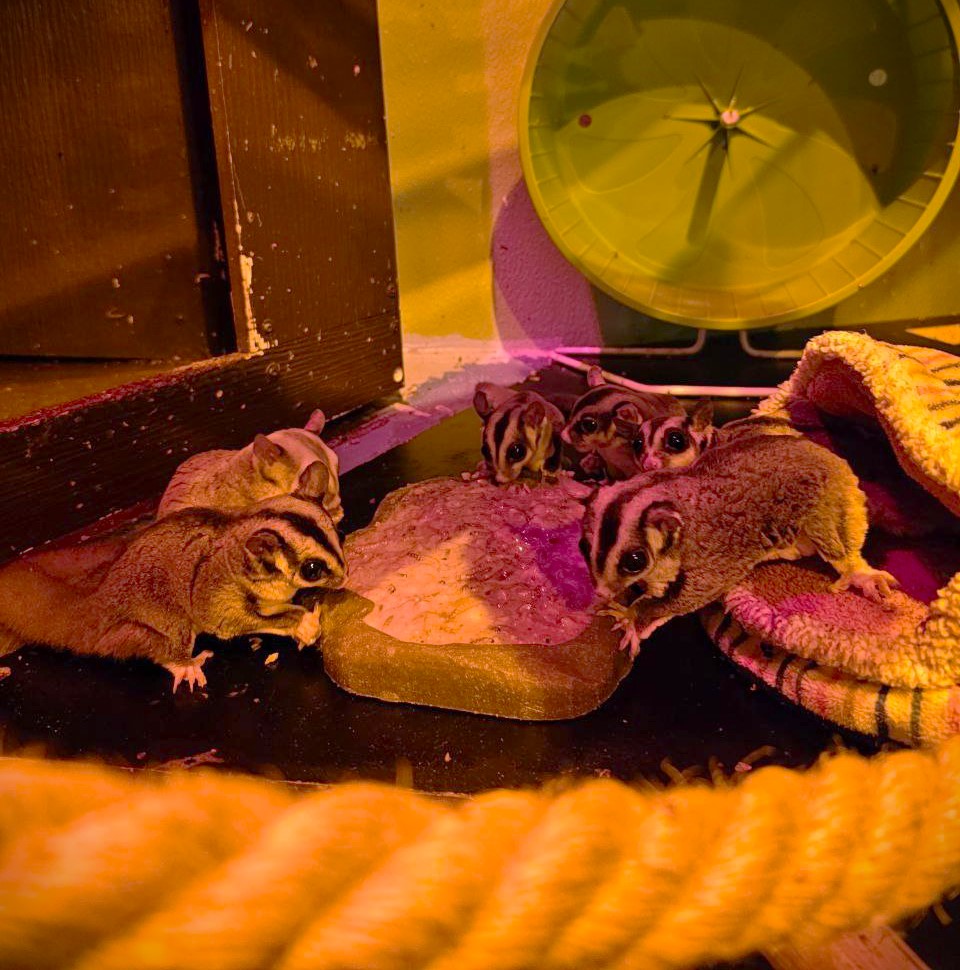SeaQuest Guide to Coatimundis
Share it on:
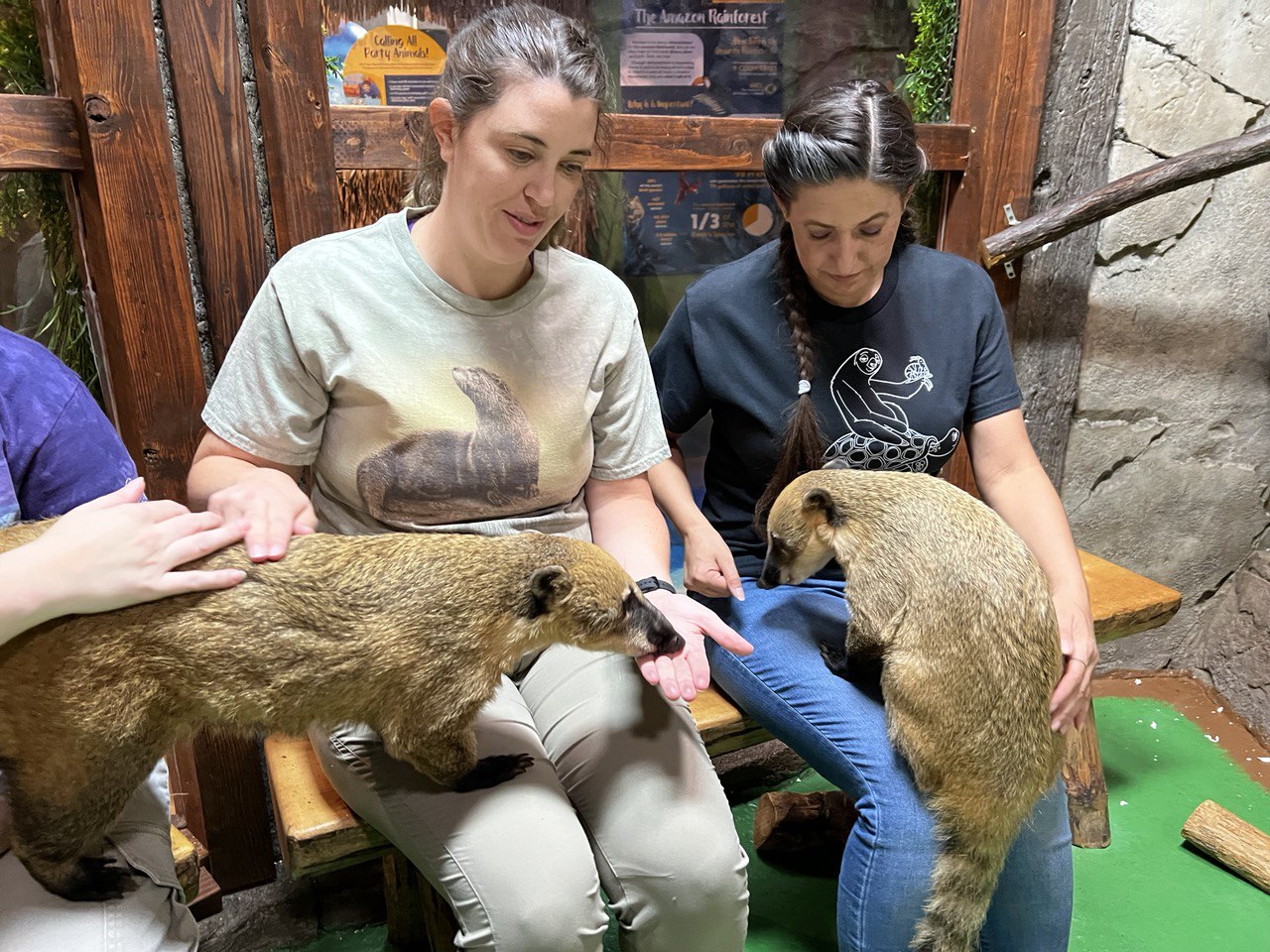
Coatimundis, also known as coatis, are fascinating creatures that capture the interest of animal lovers, wildlife enthusiasts, and kids alike. With their playful nature and unique appearance, these exotic animals are truly a sight to behold.
Let’s dive into the world of coatimundis and learn more about them!
What is a Coatimundi?
Coatimundis are highly social, intelligent, and talkative little animals closely related to the raccoon. Coatimundis are named for their distinct snout. The name “coati” comes from an indigenous South American language and means “belt-nose” due to the unique way coatis sleep with their snout tucked into their belly. There are four distinct species of coati, each with its own scientific name:
- White-nosed coati (Nasua narica)
- Western mountain coati (Nasuella olivacea)
- Eastern mountain coati (Nasuella meridensis)
- Ring-tailed coati (Nasua nasua)
Resembling their raccoon cousins, coatis have long ringed tails that stick straight up in the air. Unlike other tree-dwelling mammals, the coati doesn’t use its tail for gripping. Instead, the coati uses its tail as a balancing pole while climbing and as a beacon to other coatis while foraging on the ground.
How Big Do Coatimundis Get?
Females can grow roughly the size of a housecat, while males can grow double that size. Coatis have thick, coarse fur along their body and, as noted earlier, a distinct upturned snout that helps them forage. The color of their coat and snout can change depending on the species.
Coatis also have double-jointed ankles that can turn a full 180 degrees. These flexible joints help them easily climb up and down trees, excavate and forage quickly, and allow them to escape almost any human-made enclosure.
With comprehensive health care and diet, Coatimundis have an average lifespan of 14 years in captivity. They only live to around seven years in the wild.
Where Do Coatimundis Live?
Coatimundis are native to South and Central America, although populations can extend into the southwest of North America. They reside in environments ranging from dry open forests to tropical woodlands and have even been found high up in the Andes Mountains.
While they come down to forage during the day, coatimundis are well known for making homes in the trees. They live, sleep, and even give birth in trees! After mating, females build substantial nests in the branches for their babies until they are old enough to come down to the ground.
What is a Coatimundis Behavior and Social Structure?
Unlike their raccoon cousins, coatimundis are diurnal creatures, meaning they are active during the day and rest at night. During the day, coatimundis spend most of their time foraging for food on the ground before retreating to sleep in the trees at night.
Groups of coatis are called “bands,” and they consist of 20-30 females and babies living together. These bands take turns watching the babies while the others forage, and they tend to be noisy, chatty, and very social! The coatis use grunts, chirps, clicks, barks, and snorts to communicate with each other throughout their day as they forage.
While female coatis live in their bands and prefer a more communal lifestyle, male coatis are solitary creatures. After two years of age, they will isolate themselves to live and forage alone, only joining the bands again during mating seasons.
What Does a Coatimundi Eat?
Coatimundis are incredible foragers; their diet is about anything they can get their paws on. Fruits, vegetables, insects, and small vertebrates such as frogs, mice, and lizards are all on the menu for coatimundis! Coatimundis have also been known to try to eat human food, showing up uninvited to raid picnics and garbage bins.
Do Coatimundis Make Good Pets?
It may be tempting to welcome one of these furry friends into your home as a pet, but coatimundis, unfortunately, do not make great pets. They are brilliant, social animals, and meeting their social needs in a domestic setting can be challenging. While coatimundis aren’t inherently dangerous to humans, they can become aggressive in captivity if they aren’t adequately socialized and stimulated. In addition to their immense social needs, coatimundis are very agile and flexible, making it incredibly easy for them to escape from the home.
Are Coatimundis Endangered?
Currently, the Coatimundi are listed as Least Concern (LC) on the IUCN Red List. However, coatimundis are at risk of losing their habitat due to deforestation. Because of this, they are more likely to engage in predatory behavior, such as hunting chickens and damaging potato crops, resulting in increased human hunting.
Because coatimundis are a relatively under-studied species, scientists theorize that they may be experiencing higher levels of endangerment and number loss than we may realize. Due to their relatively unknown status and current endangerment concerns, these furry, social, intelligent creatures are great animals to spread the word about!
Use Code BLOG25 for 25% OFF Any Admission TicketSeaQuest is committed to protecting our world’s oceans and endangered animals. We focus on how to be proactive in finding solutions. To learn more about how you can help SeaQuest with this cause, book your visit today at any of the following locations: Utah, Las Vegas, Dallas-Fort Worth, Sacramento, Minneapolis, Lynchburg, and New Jersey.

